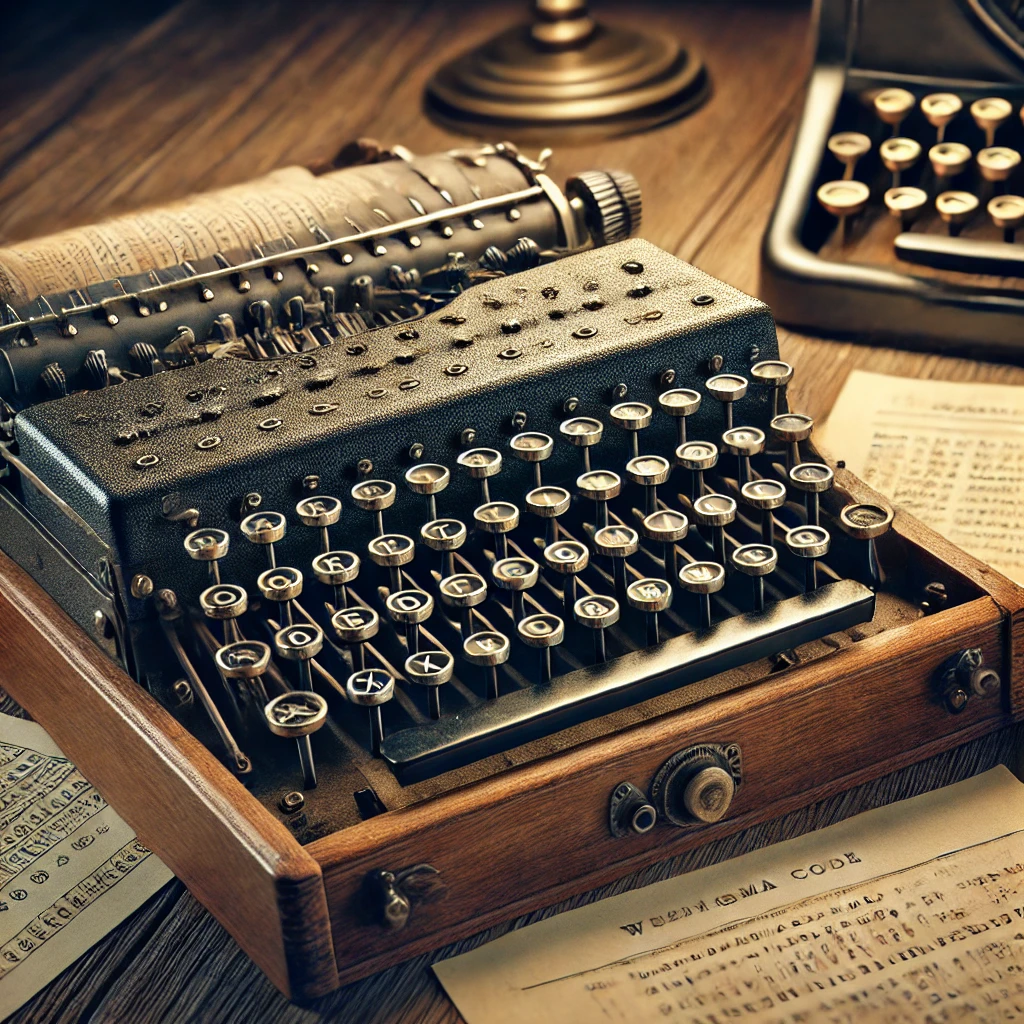

The Enigma code refers to a family of encryption machines used by various European countries, most notably Germany, during World War II and in the years leading up to it. The most well-known version of the Enigma machine was used by the German military for secure communication. Here is an overview of the Enigma code and its historical significance:
Development of the Enigma Machine:
The Enigma machine was originally invented by Arthur Scherbius, a German engineer, in the early 1920s. It was initially marketed for commercial use to protect sensitive communications.
The German military adopted the Enigma machine in the late 1920s and began using it extensively for encrypting military messages.How the Enigma Machine Worked:
The Enigma machine was an electro-mechanical device that consisted of a keyboard, a set of rotating cipher wheels (rotors), a plugboard, and a display panel.When a key was pressed on the keyboard, an electrical current passed through a series of rotors and the plugboard, creating a complex substitution cipher for each letter.
The settings of the rotors and plugboard were changed daily, creating a new encryption key. This made breaking the code extremely challenging because it changed daily.
Cryptanalysis and Code Breaking:
The task of breaking the Enigma code was assigned to various Allied code-breaking teams during World War II, most notably the British at Bletchley Park.
Alan Turing, a British mathematician, and other codebreakers developed the Bombe, an electromechanical device designed to decipher Enigma-encrypted messages.
The breakthrough in cracking the Enigma code came with the capture of German codebooks and the development of more sophisticated decryption methods.
The deciphered messages provided valuable intelligence to the Allies and contributed significantly to their victory in key battles and campaigns.Secrecy and Impact:
The work at Bletchley Park and other code-breaking centers was kept highly classified during the war and for many years afterward.
The successful decryption of Enigma-encrypted messages allowed the Allies to anticipate German military movements, intercept U-boat communications, and gain insights into German strategy.
Historians consider the breaking of the Enigma code as one of the most critical achievements in the field of cryptanalysis and a pivotal factor in the outcome of World War II.Legacy:
The Enigma machine and the code-breaking efforts during World War II have had a lasting impact on the field of cryptography and computer science.
Alan Turing's work on breaking the Enigma code laid the foundation for modern computing and artificial intelligence.
The Enigma story has been the subject of numerous books, films, and documentaries, including the famous film "The Imitation Game," which portrayed Alan Turing's role in the code-breaking effort.The Enigma code remains an iconic symbol of the challenges and triumphs in the world of cryptography and intelligence during World War II, and it continues to capture the imagination of people interested in history and technology.